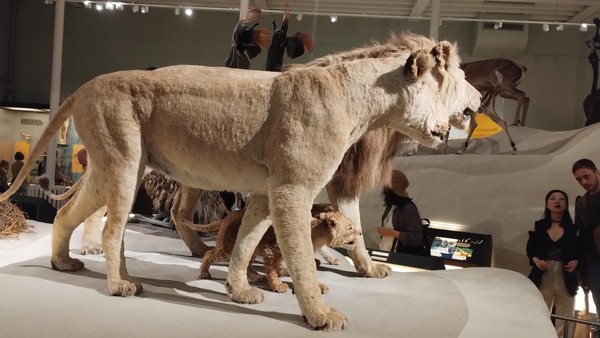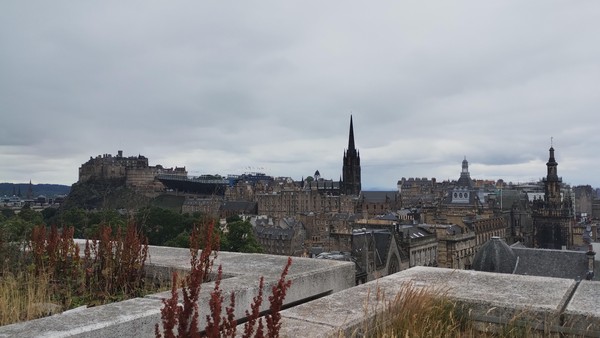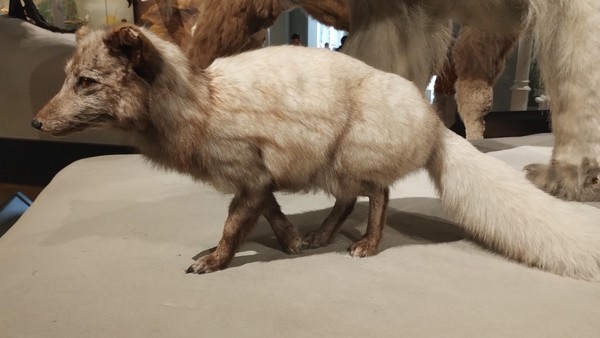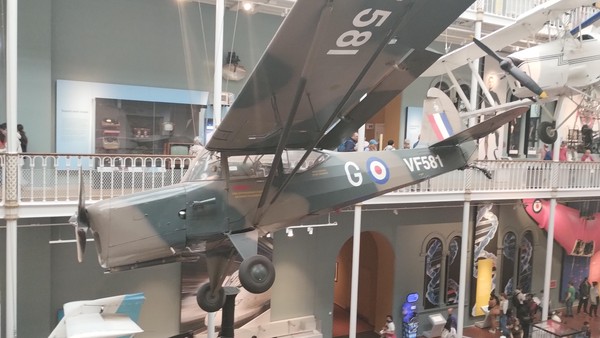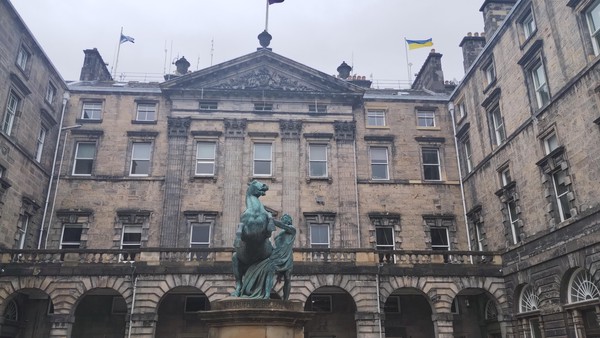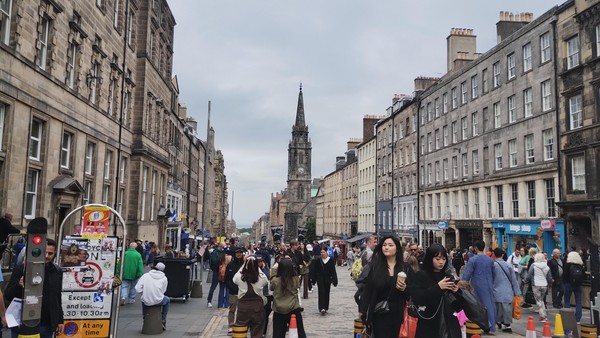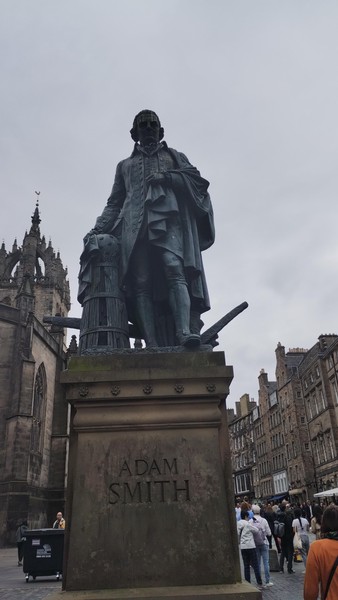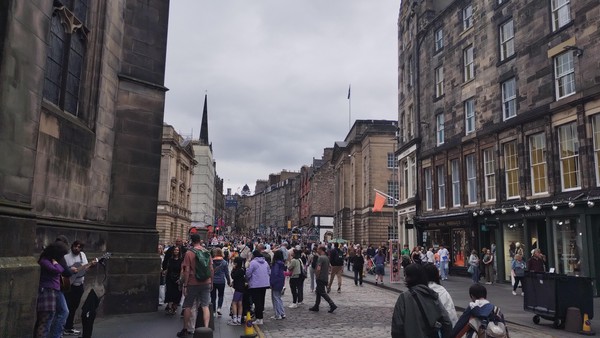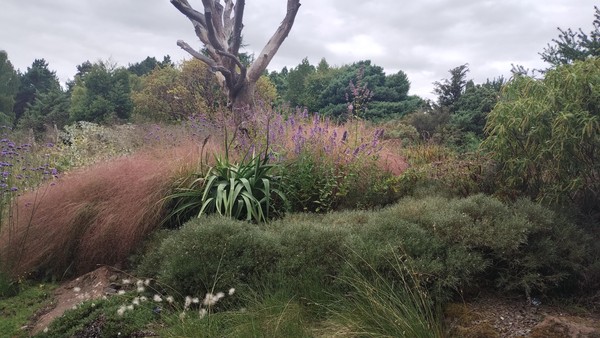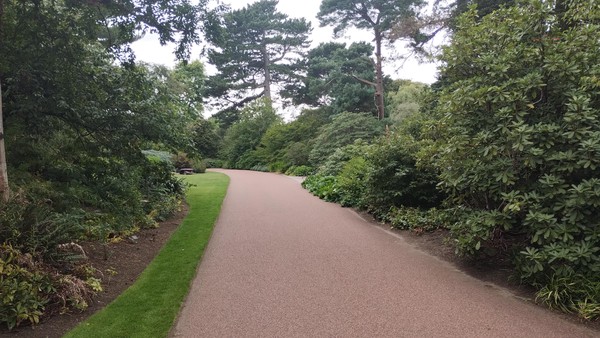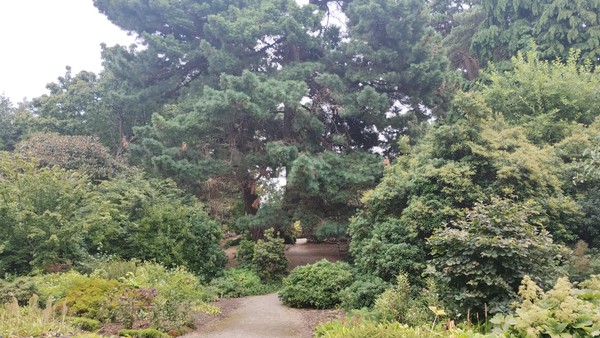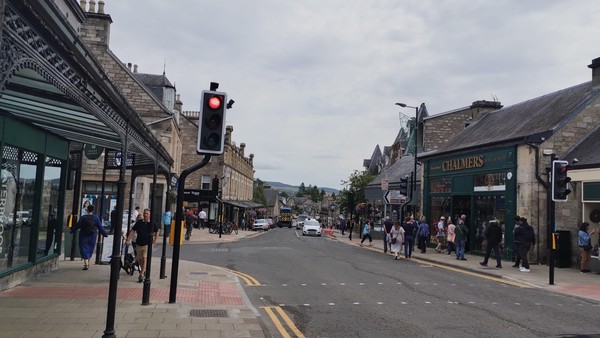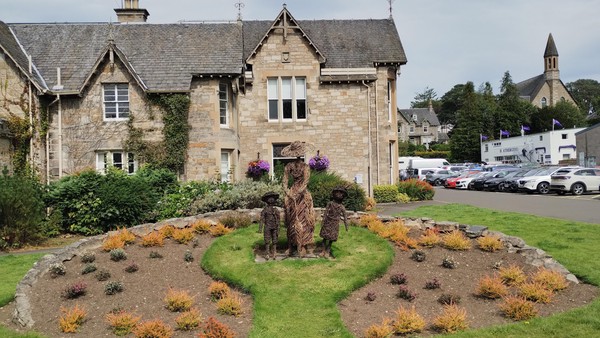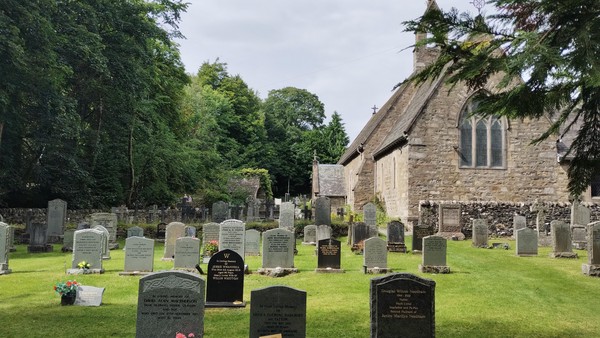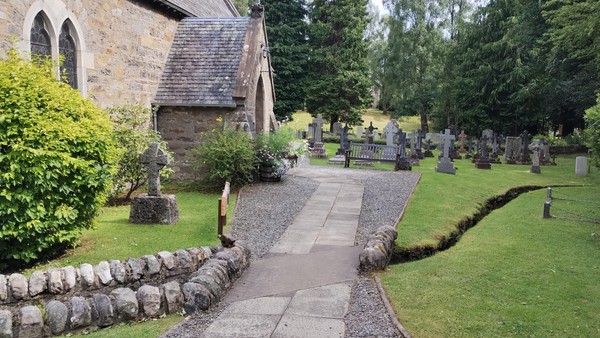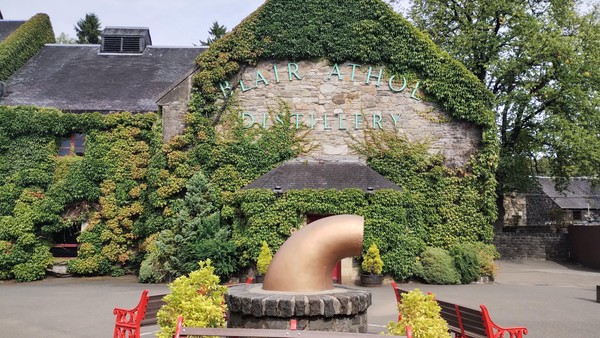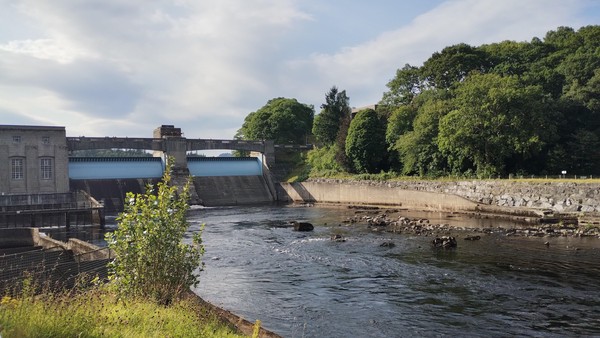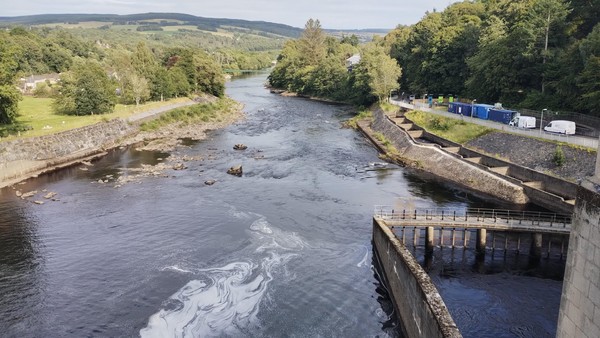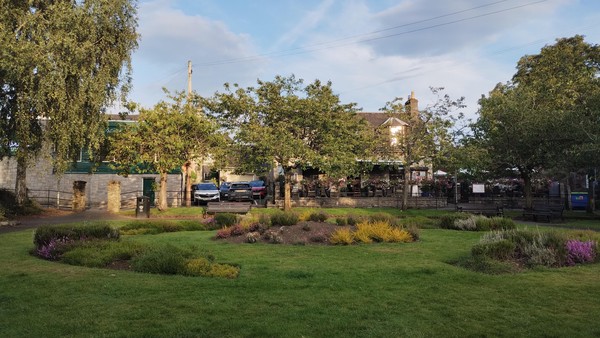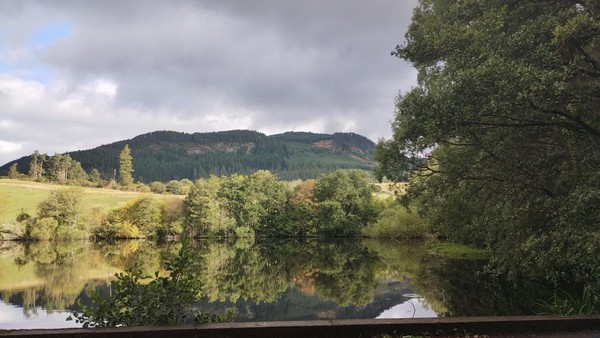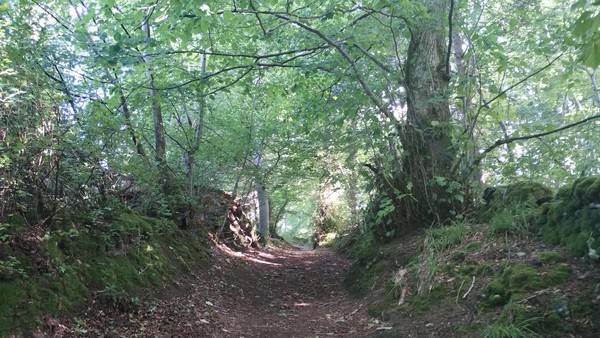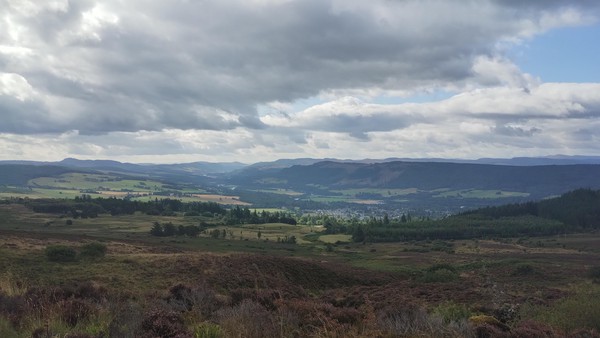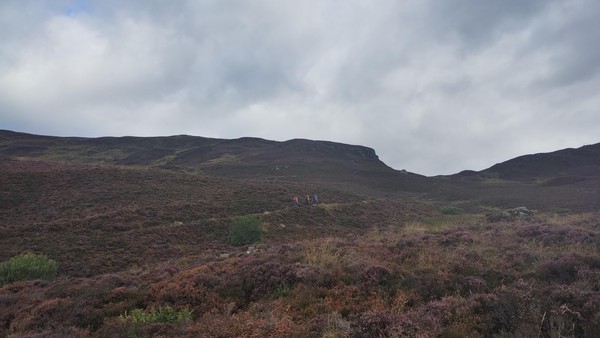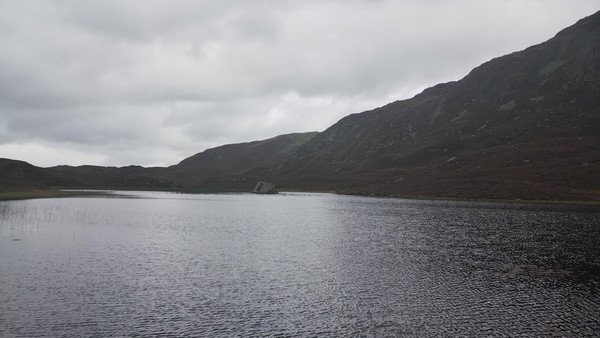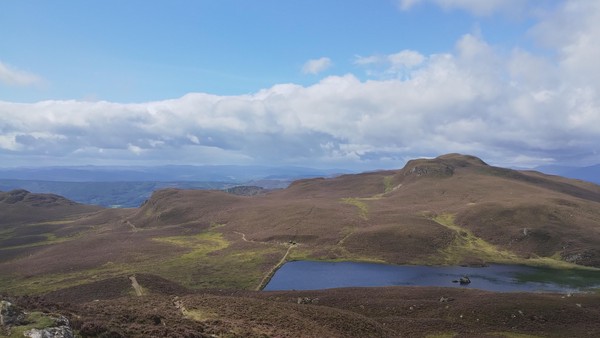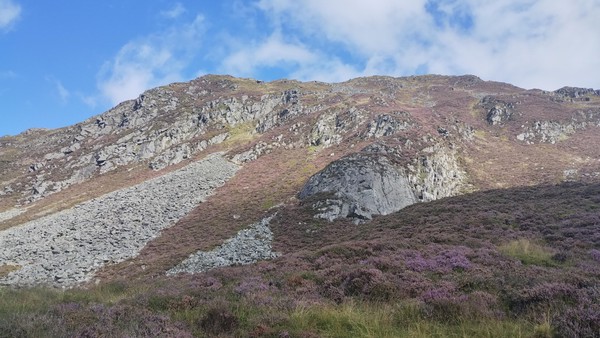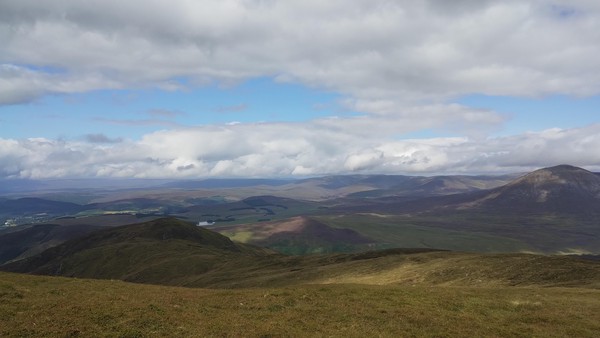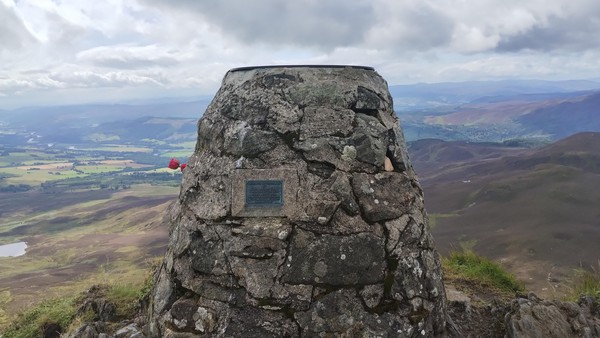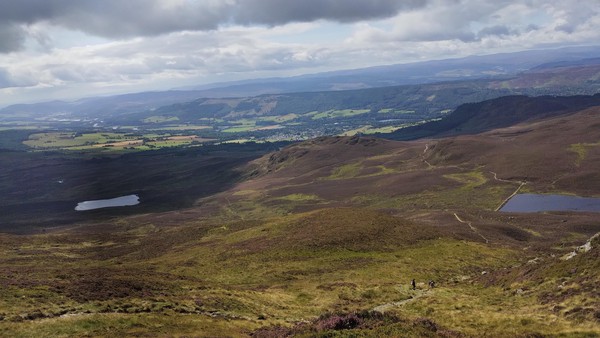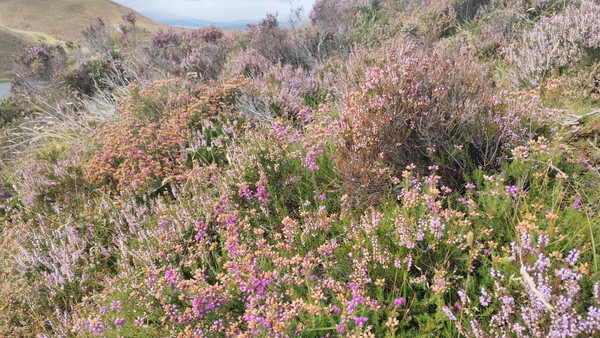Scotland Trip
August 25, 2025 | 4,209 words | 20min read
The following is a travel journal in which I describe my trip to Scotland. Before I start, I want to give a philosophical motivation for traveling, feel free to skip this if you are not interested.
Philosophical Reasoning
I think the following words from Seneca’s 28th letter are important:
What pleasure is there in seeing new lands? Or in surveying cities and spots of interest? All your bustle is useless. Do you ask why such flight does not help you? It is because you flee along with yourself. You must lay aside the burdens of the mind; until you do this, no place will satisfy you.
One should not simply travel because there are problems at home, or because one is depressed and looking for distraction. For a while one might forget the problems, but sooner or later they slip through and one becomes unhappy again. (For example, see my reflections in Day 4: Optimization Theory) in my Namibia Travel log.
But I would go even further than Seneca. Not only do I think that traveling with such a goal is invalid, but also as he writes, “What pleasure is there in seeing new land?”, there is no intrinsic goodness in experiencing either new or familiar things in themselves. Experiences are instrumental: they are good only insofar as they serve a higher intrinsic good.
What is this higher good? If you have read my previous article (How to Live), then you know that I propose virtue as the only intrinsic good. As such, new experiences are only good insofar as they help us develop and nourish virtue.
How can they do this? First, I didn’t travel to Scotland with sightseeing as my primary goal, but rather at the behest of a friend who invited me. Accepting the invitation and offering companionship was thus an act of friendship. Second, this was my first trip alone outside my home country, which developed courage. Third, I have a tendency to spend too much time sitting in my room, in other words, I’m prone to the vice of laziness. Traveling helps counter that vice, cultivating the virtue of industriousness, which in turn gives me more opportunities to practice virtue by being active in the world.
A while ago, a friend of mine, someone I’ve known online for almost ten years, invited me to visit him in Scotland. The starting point for this invitation came when I told him I wanted to try mushrooms for the first time, but I was nervous and had no trip, sitter. He offered to be one for me. So, I accepted the invitation with the thought that we could hang out in person, and that I could also do a bit of sightseeing in his city, Edinburgh, and perhaps in Scotland more broadly.
Since he didn’t have any strict appointments for a while, and I didn’t either, I looked up the cheapest direct flights from Stuttgart to Edinburgh. Most flights with Eurowings were around 300 euros, but I found one on July 30th, just a few days after his invitation, for only 60 euros, with the return flight on August 8th also 60 euros. So I booked them, and just a few days later, without much planning beyond my goal of spending time with him and doing some sightseeing, I was on my way to Edinburgh.
Day 1: The Flight
Early in the morning of July 30th I made my way from my small hometown to Stuttgart, where my flight was departing. For that I used public transport. This is especially practical thanks to the recently introduced Deutschlandticket, which costs roughly 50 euros per month and allows you to use almost all public transport in Germany (trains, buses, trams), with the exception of high-speed trains.
During the train ride I found myself in a particular mood. The main reason why I wrote my article How to Live, and more broadly why I became interested in philosophy in the first place, is that I struggle with the meaning of life, or rather its aapparent lack of it. Many people, when faced with such a question, turn to God, or they try to live a distracted life so as not to face the question again. But that was not good enough for me. I wanted the meaning of my life to be more grounded.
Thus, I began my philosophical inquiry, which I outlined in that article (though the system is not yet complete, I still want to build on Paul Tillich’s account of Grund, Nietzsche’s overcoming of ressentiment, and the Buddhist account of desire). And although I believe my argument in that article is sound, and on an intellectual level I hold to it, emotions do not always keep pace with reason. In other words, sometimes the emotional reality does not correspond to the intellectual reality.
We all know this: we may rationally understand there is no reason to fear something, yet still we feel fear. That doesn’t mean it’s impossible to align thought and feeling. The first step in overcoming any problem is recognizing it intellectually, and then waiting for emotion to follow. For example, to overcome the fear of spiders we first have to reason that, at least here in germany, the fear is not valid (in Australia, of course, it might be a different story). With time, hopefully, the emotion follows.
Why do I explain all this? The reason I was in such a mood that morning was precisely because of this gap between intellect and feeling. Even though I know intellectually that all meaning and value are subjective (see my article Where the Eiffel Tower Is Is Not Objective), and that I myself choose virtue as the good, I couldn’t help but feel the meaningless of the object–subject world.
I think the following words from a book I happened to be reading on the train sum it up well:
The human heart is like a bowl with a little crack in the bottom, so that water is always leaking out.
And you have to keep pouring more and more in, to try and make up for it.
That no matter what you do in life, you're always losing things, either explicitly or in the abstract.
And the only way to make up for it is to keep adding new things to make up for it.
Because if you're not careful...
You won't be able to keep it up, and before you know it, you'll have nothing at all.
And then you'll be out of luck for good.
But enough brooding, back to the trip. I arrived at the airport, the flight was delayed by an hour, and then I was up in the air. I had a really good nap and two hours later, which thanks to the nap felt more like thirty minutes, I was in Edinburgh.

My friend was already waiting with his car in the parking lot. Unfortunately, because of the delay he ended up waiting about an hour, which cost him 35 pounds in parking fees, crazy isn’t it?
On the ride, he told me about the new UK age-restriction law on adult content (see here). It doesn’t just affect pornographic sites, but also things like Discord channels. You now need to send in a picture of your ID to get access, or just use a VPN.
When I arrived at his home it was already afternoon. We ordered some pizza and watched soem anime, and that was the day.

Day 2: Edinburgh
The place I was staying in was in the suburbs of Edinburgh, with a bus station just a minute away that could take you directly to the city center in about 30 minutes. Although that might sound long, it’s mostly because of how many bus stops there are in the city. I bet the same drive by car would have taken no longer than 10–15 minutes.
Coming from Germany, I found the public transport in Edinburgh, especially the buses, both better and worse in different ways. Better, because of the sheer number of bus stops: you’re never more than five minutes away from one. And unlike my village, where a bus comes maybe every half hour, here they arrive almost constantly. Often there’s even a queue of up to three buses back-to-back at a station. I also really liked how many bus stops have digital displays showing when the next buses are due (we should definitely have this everywhere in Germany), and how easy it is to just pay by tapping your debit card—no questions asked.
On the other hand, what was worse is the lack of interoperability between different bus and train companies. In Germany we have the Deutschlandticket, which costs about 50 euros a month and lets you travel as much as you want (as long as it’s not on the very fast trains, the ICE) across all buses, trams, and regional trains. In Scotland, there’s no such unified ticket, every company does things differently, and there isn’t even a single app that shows you all possible routes. I found Google Maps worked best. In Germany, it’s normal to have one central travel app for all public transport.
But enough about transport. In the morning my friend and I went to the city center to check out Scotland’s National Museum. Entrance was free, which I think is a very cool idea. If it’s the national museum, then it makes sense that everyone in the country, rich or poor, can enjoy it. That said, I felt it would have been fair if foreigners had to pay. Free entry also means the museum is very full, so you don’t get much quietness, but instead a bustling atmosphere.
The museum itself is huge and varied, with exhibits ranging from technology and science, to the history of Scotland, to collections of animals. You can also go up to the roof, which offers a great view of the city.
Afterwards my friend and I split up, he had other things to attend to, and I continued exploring the inner city. Most importantly, I walked along the Royal Mile, the historic street that leads up to the famous Edinburgh Castle. The Royal Mile has many little side alleys to wander into and explore. The street was packed with people, and for good reason: I visited in August, the month of the Fringe Festival. Artists from all over the world come to perform, many in official halls and theaters, but also plenty right on the streets. Edinburgh was especially busy because of it.
I didn’t go into the castle itself, since I had heard it was expensive, had long wait times and wasn’t all that special. Besides, I wasn’t that curious, I’ve seen plenty of castles in Germany, like the Wartburg. Instead, I visited St. Giles’ Cathedral, which is a very beautiful place. Inside, there are a few exhibits about the religious conflicts between Protestantism and Catholicism. At the time, most of Scotland’s population was Protestant, but the monarch was Catholic. This created a general fear among the people that they might be forced back into Catholicism, leading to much conflict.
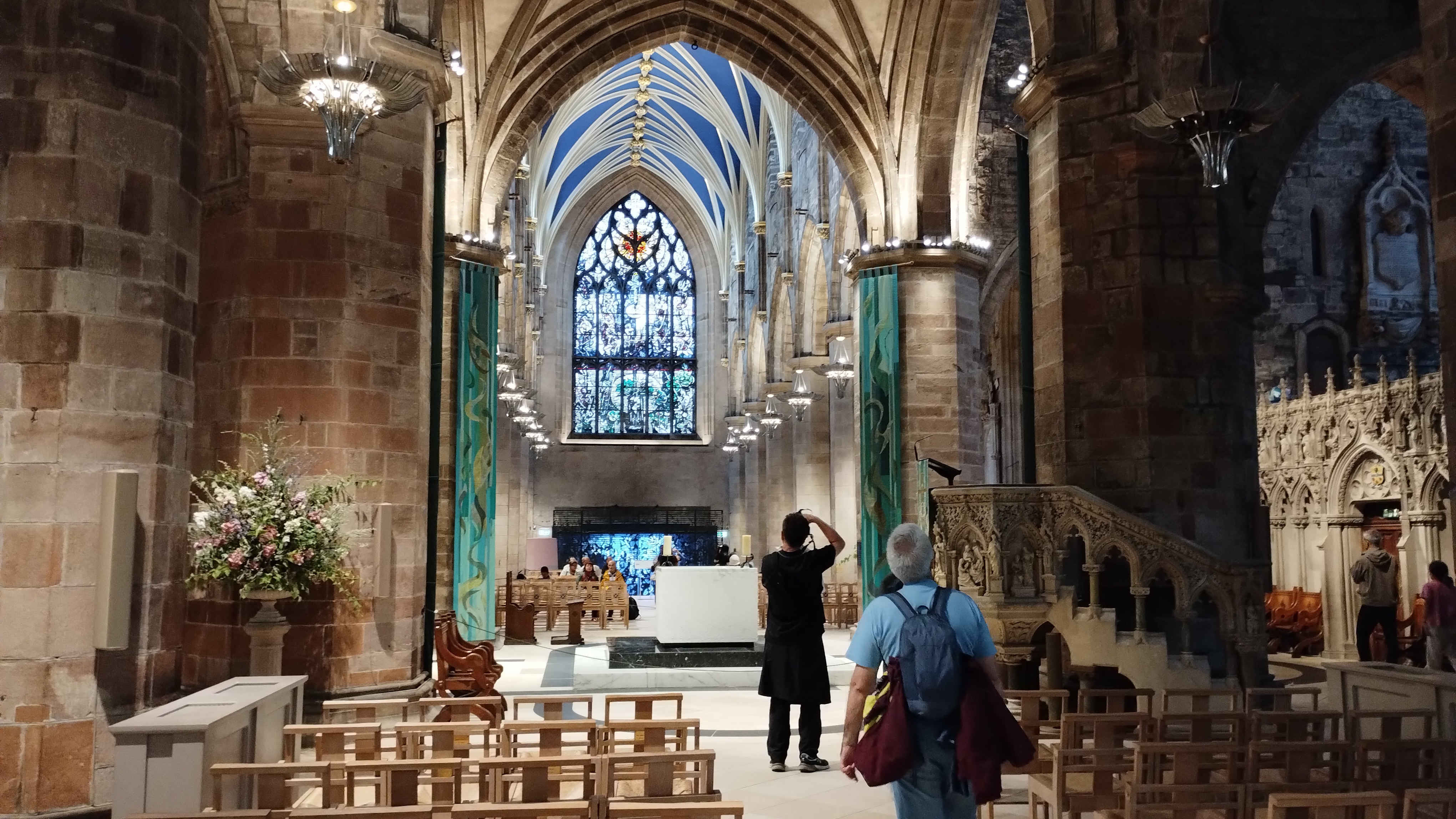
For the last point on my itinerary, I made my way to Arthur’s Seat, a hill just outside of Edinburgh. Hiking up takes about 30 minutes, and another 30 to come back down. From the top you get a wonderful view of the city, though it’s also a very popular place, so you’ll never be alone. On my way up I even saw some kind of wild chicken, which was neat. I chilled up there for a while before making my way back home.
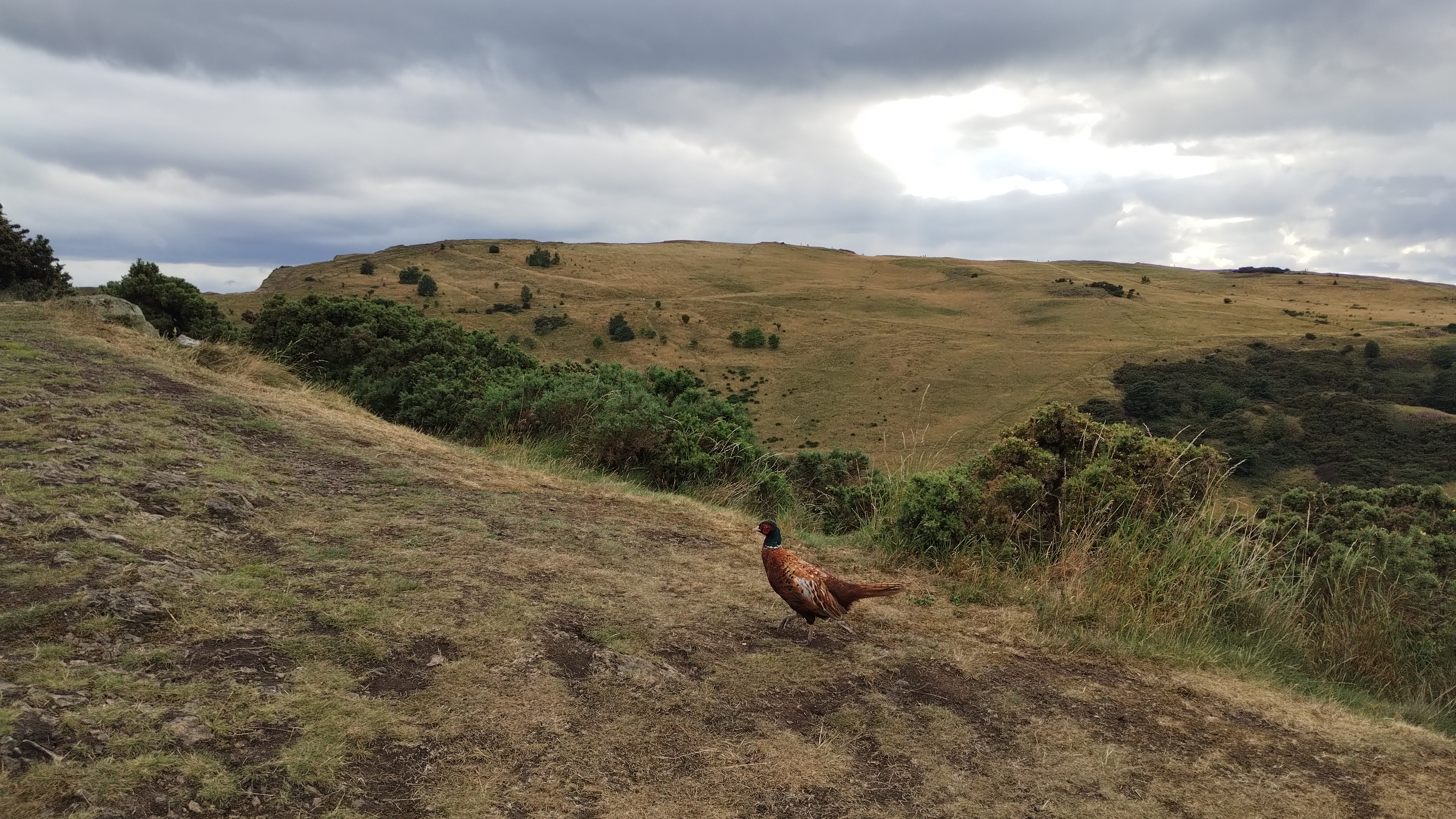
Day 3: Edinburgh
In the morning I again headed into the city to see the things I hadn’t managed the previous day. My friend wasn’t feeling well, so I went by myself.
My first stop was the Scottish Parliament, which is open to the public. Before going in you have to go through a security check. Architecturally it’s a very nice building. In the foyer there are exhibits about the construction of the parliament, including some models of it, as well as exhibits relating to democracy and voting, for example, when women were first allowed to vote, and when Scotland got its own parliament. You can also go into the parliament chamber itself and watch the senators arguing with each other. Sadly, when I was there nothing was happening, and the chamber was empty. Still, it was cool to see.
Next on my list was the Palace of Holyroodhouse, the official royal palace in Scotland, still in use today. I thought it would be a good alternative to Edinburgh Castle, maybe less crowded. As you walk through the palace room by room you get an audio guide. Honestly, much of the commentary I found unnecessary, but there were two stories that really stood out.
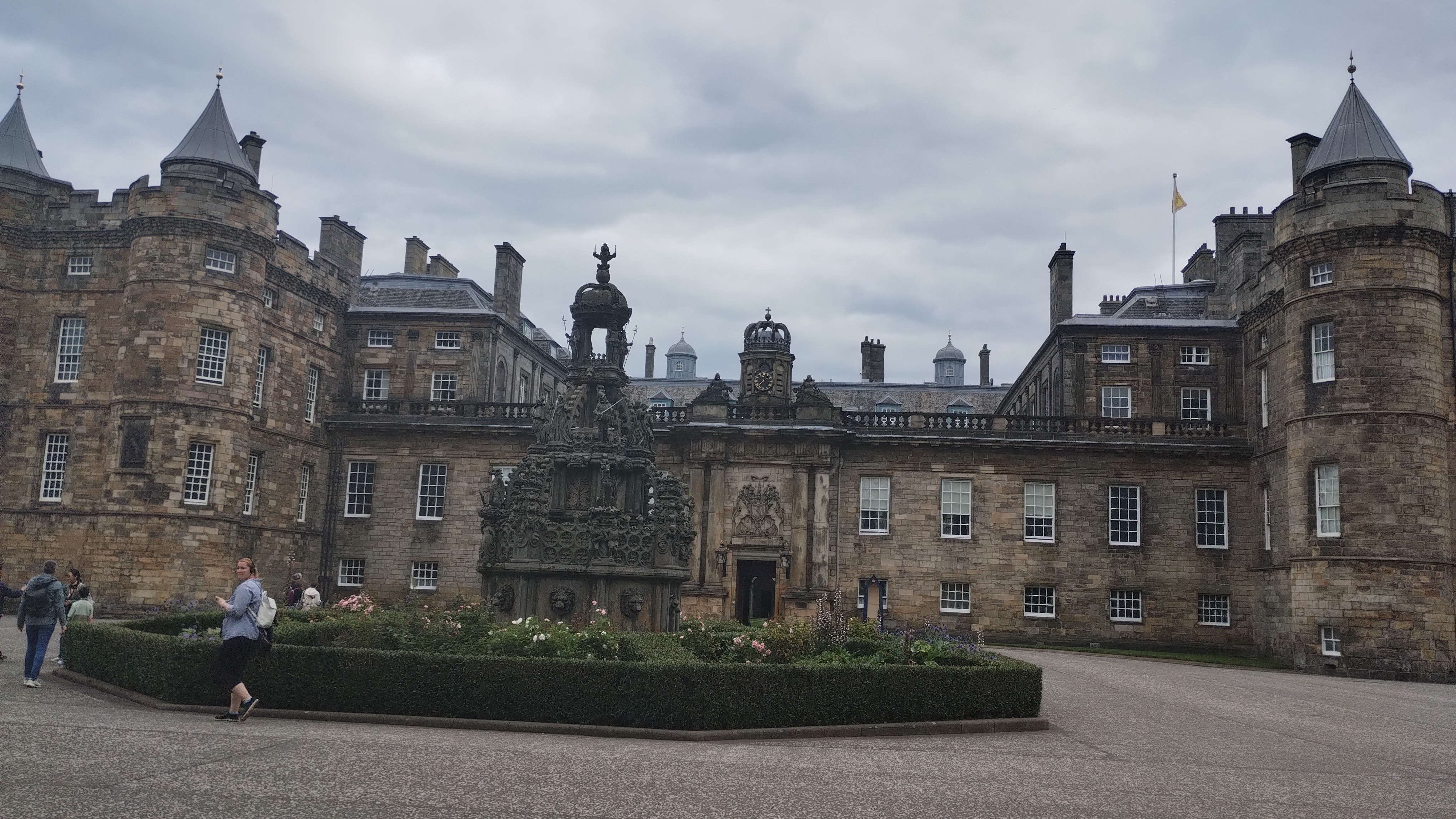
The first was about the room full of paintings of Scottish kings. These paintings were commissioned by one of the kings to bolster his own legitimacy. They are not historically accurate but more like imagined versions of what the kings might have looked like. Strikingly, all of them were painted with a hawk nose, added deliberately by the painter so that the past kings resembled the current king, making the hawk nose itself a symbol of “kingliness.” At one point soldiers stormed the palace and fought inside; to this day you can still see sword cuts on some of the paintings.
The second story was about a queen of Scotland who was murdered in the palace. Legend says that if you look closely enough in one corner of a room you can still see the bloodstains.
The palace also has a garden you can walk through (honestly, I wasn’t impressed, I’ve seen better gardens) and the ruins of a church that was once Catholic. With the decline of Catholicism in Scotland, the church fell into disuse and ruin. Overall, I would only recommend the palace if one is particularly interested in the monarchy.
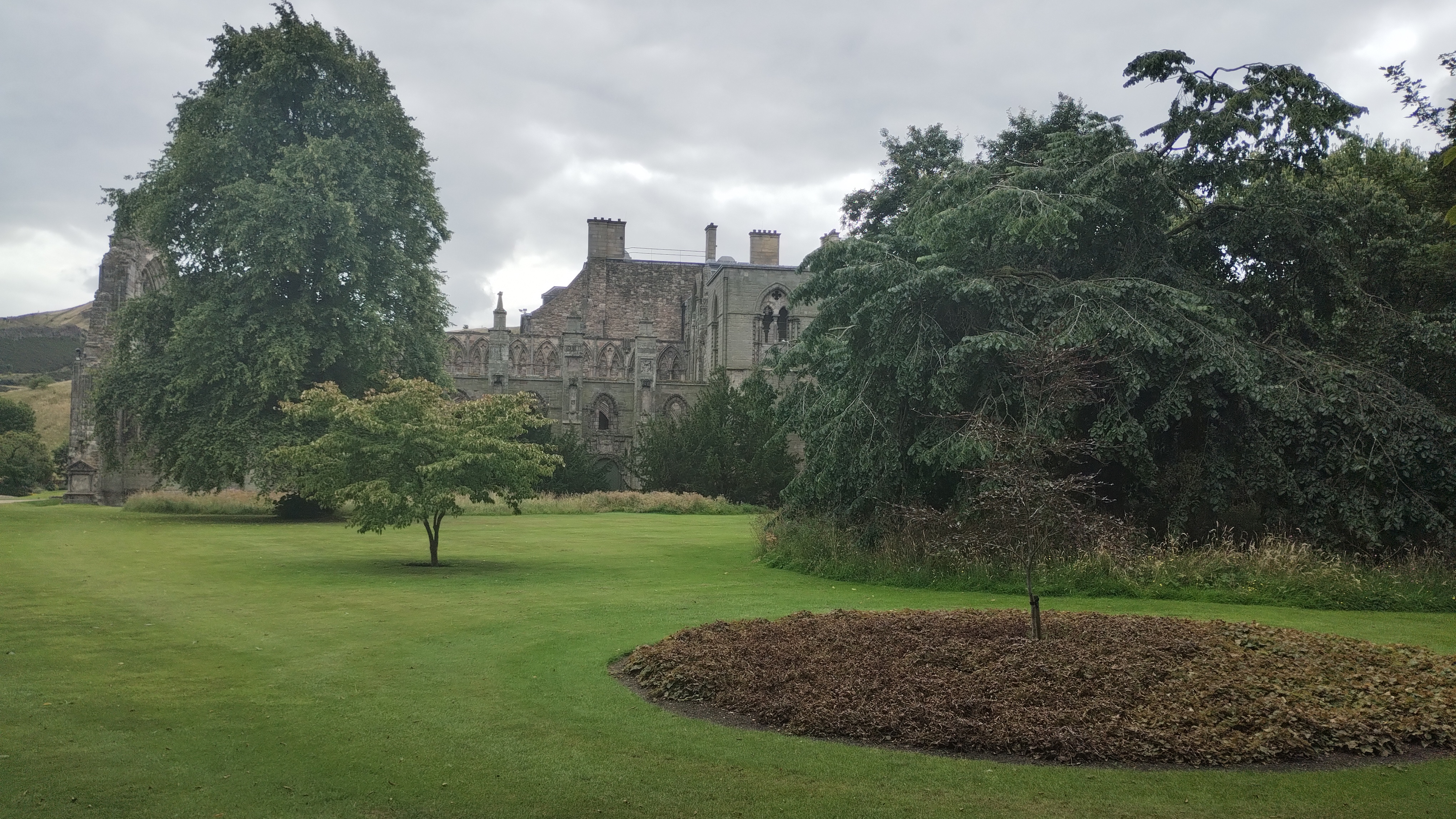
As a philosophy buff, I couldn’t pass up the chance to visit the grave of David Hume. He is most famous for standing on the side of empiricism in the great philosophical fight between empiricism and rationalism. (Here’s a paper from him if you want to read.) Before coming to Edinburgh I didn’t even know he was buried there, but while searching for sightseeing spots I came across Calton Cemetery, which is in fact Hume’s resting place.
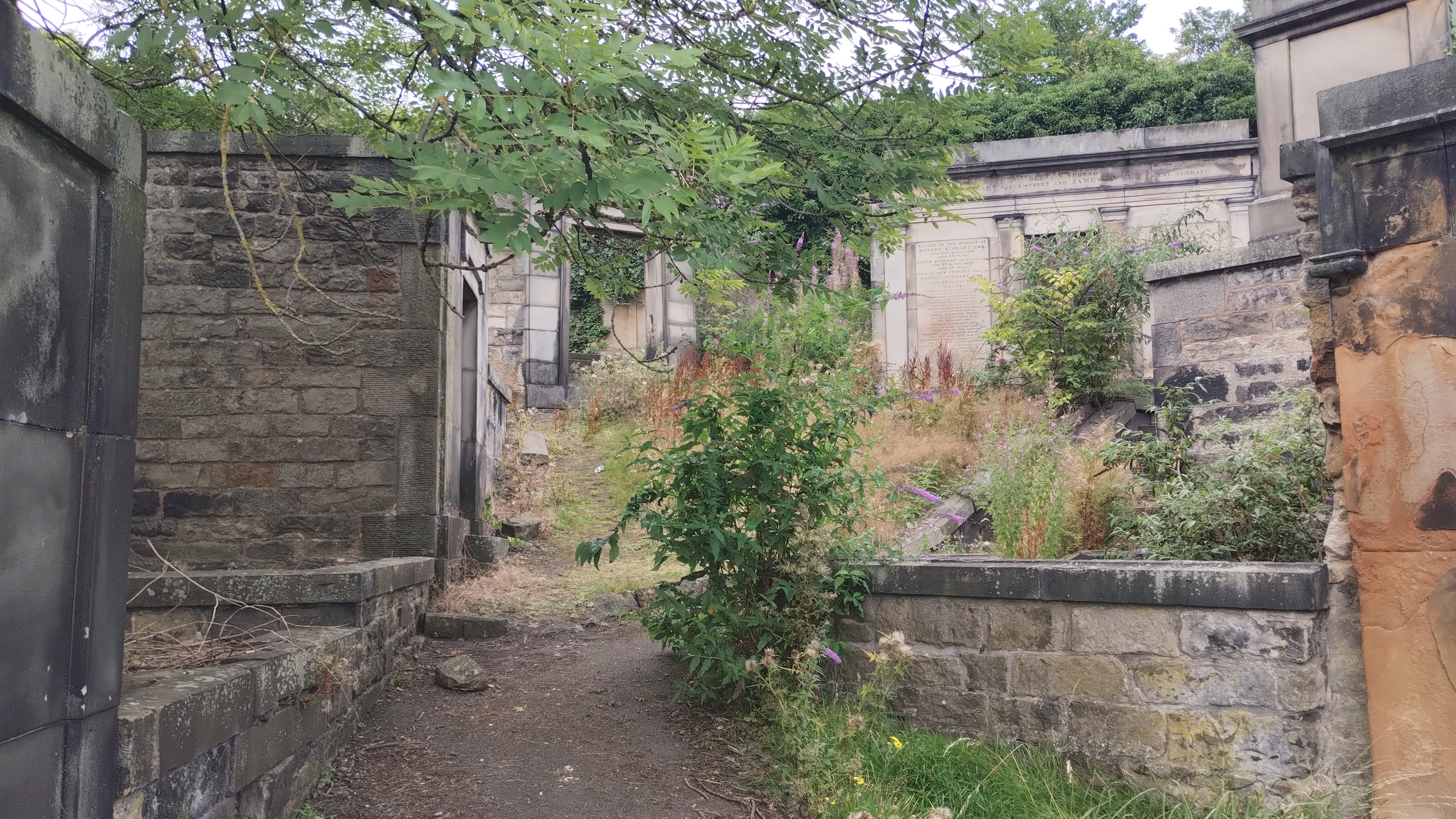
Finding the grave took me much longer than expected, because the Calton burial grounds are split between “Old” and “New” cemeteries. If you just look up “Calton graveyard” on Google Maps you’ll get sent to the old one. It has a very cool atmosphere (I can imagine it being quite spooky at night), but Hume isn’t buried there. I recommend searching directly for “David Hume grave” instead, as this will guide you to the right place. I must have wandered around for two or three hours before finding it.
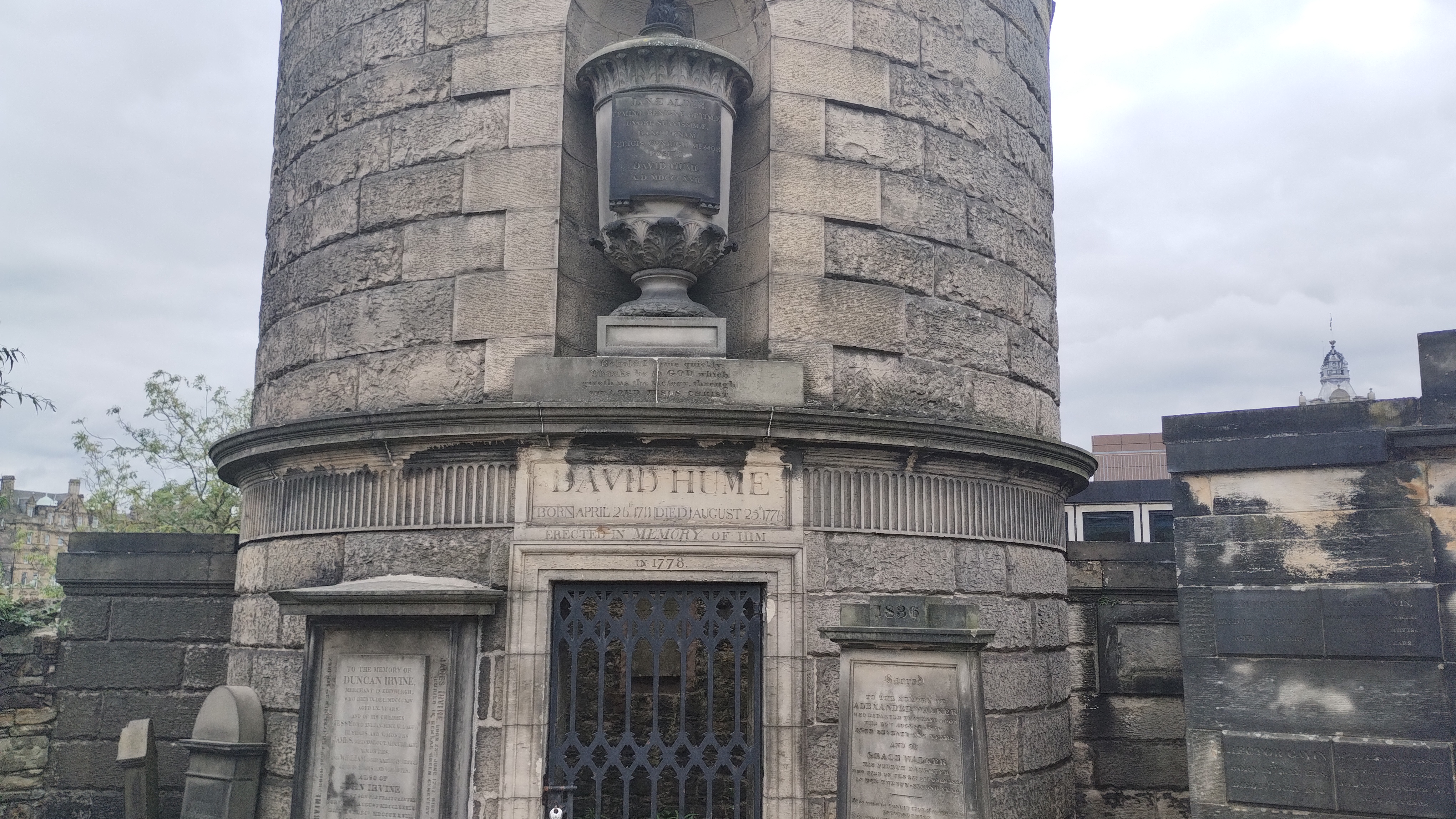
Next to Calton Cemetery is also Calton Hill, which in my opinion offers a better view of Edinburgh than Arthur’s Seat. From the top, you can walk down the “David Hume Walk,” named after him because he used to stroll there regularly and advocated keeping the hill in its natural form so the people of Edinburgh could enjoy it. Ironically, walking down that path was one of the reasons it took me so long to find his grave.
Down there, I also came across a very unique bookshop that I can highly recommend exploring.
Before moving on to the final stop on my itinerary, I did a quick supermarket run to get some food. All I can say is: German bread is so much better. It’s insane. The bread I found was some kind of fluffy, sweet milk bread—more like cake than bread.
For the final destination of the day I went to the Royal Botanic Garden. It has all kinds of plants, trees, and flowers, not only native to Scotland but from all around the world. For example, there’s an area for Chinese plants. One of the information signs explained that the garden regularly sends people abroad to find unique plants to bring back to Edinburgh.
Although the variety is impressive, I found the garden lacked a cohesive vision. Because of that, I didn’t find it particularly beautiful, just interesting. In other words, I’ve seen better botanical gardens. Maybe it’s just that I was missing the sheer abundance of flowers, like at the Bundesgartenschau in Germany.
Day 4: Break Day
After walking across the city the previous two days, my body ached. So I decided that the fourth day would be a rest day. I just chilled with my friend and played some video games, namely Far Cry and Dying Light, both of which I had never played before. I must say, I was astonished at how good Dying Light is, considering it’s nearly 15 years old.
In the evening, my friend’s mom invited us to join her and her friends at the Frankenstein Pub, famous for its theme and for the Frankenstein figure that walks down the stairs into the pub at a certain time each day. Downstairs they had karaoke, and we joined in. Most people were doing the usual karaoke classics, but my friend decided to mix it up with a heavy metal song, lol.
I also got complimented on my hair twice that night. At the time I had been growing it out for a few months, so I basically had a very scruffy afro.

Day 5: Drugs
One of the main reasons for visiting my friend in the first place was that I wanted to try psychedelics but needed a tripsitter, and he offered to be one. So on this day I decided to take some shrooms, more precisely Penis Envy (funny name).
My motivation came from philosophical curiosity. If you’ve followed my more philosophical writings, you’ve probably noticed that I’ve come to value authentic subjective experience more and more, as opposed to objectivism. This has to do with the Heideggerian notion of Dasein, which I find to be grounded in subjectivity by its very nature, and also with Buddhist and Paul Tillich, inspired notions of subjectivity as the ground of being.
In short, I wanted to experience what Sam Harris calls non-duality, where the watcher and the watched dissolve into one, subject and object merge, and there is no longer the sense of a person inside the body looking out at a world external to oneself. Perhaps it’s best expressed through the idiom Harris sometimes uses: imagine yourself without a head.
As you gaze at the world around you, take a moment to look for your head. This may seem like a bizarre instruction. You might think, “Of course, I can’t see my head. What’s so interesting about that?” Not so fast. Simply look at the world, or at other people, and attempt to turn your attention in the direction of where you know your head to be. For instance, if you are having a conversation with another person, see if you can let your attention travel in the direction of the other person’s gaze. He is looking at your face—and you cannot see your face. The only face present, from your point of view, belongs to the other person. But looking for yourself in this way can precipitate a sudden change in perspective, of the sort Harding describes. Some people find it easier to trigger this shift in a slightly different way: As you are looking out at the world, simply imagine that you have no head. Whichever method you choose, don’t struggle with this exercise. It is not a matter of going deep within or of producing some extraordinary experience. The view of headlessness is right on the surface of consciousness and can be glimpsed the moment you attempt to turn about. Pay attention to how the world appears in the first instant, not after a protracted effort. Either you will see it immediately or you won’t see it at all. And the resulting glimpse of open awareness will last only a moment or two before thoughts intervene. Simply repeat this glimpse, again and again, in as relaxed a way as possible, as you go about your day.
In the end, not much happened. I got an upset stomach, and after redosing twice it was already too late in the day to risk a higher dose—especially since I tend to get anxious in the dark. Still, my friend and I ended up with a really good psychedelic soundtrack out of the experience.
Personally though, I’m more of an Ichiko Aoba fan, especially her live music and her work on The First Rock.
I do still want to try psychedelics again—next time probably something more “pure,” like LSD. But that is a story for another time.
Day 6-7: Sick
Not much to tell this day. We both got sick, probably from the Frankenstein pub we had visited two days earlier. It felt like some kind of cold or flu. We spent most of the time just chilling in our beds.
I watched the LOTM anime, which is really beautiful, and read the manhwa Monster Child. I love the story, also small ending spoiler, but I just want to merge into a little sphere and live happily forever inside it. Henosis.
Day 8: Pittlochry
Even though I was still sick, I hadn’t seen much of Scotland beyond Edinburgh, so I wanted to get out one more time and explore the Highlands. At first I considered going to the Isle of Skye, but decided it was too far away. Instead, I chose Pitlochry, a small town in the middle of the Highlands, which would allow me to explore the region a bit.
Early in the morning I took the bus, as usual, into the center of Edinburgh. My plan was to catch an intercity bus to Pitlochry. That didn’t work out, twice I tried and both times even though I had booked tickets (which cost about 50 pounds each), the bus didn’t stop for me. Lesson learned: don’t take the bus, take the train! That worked perfectly.
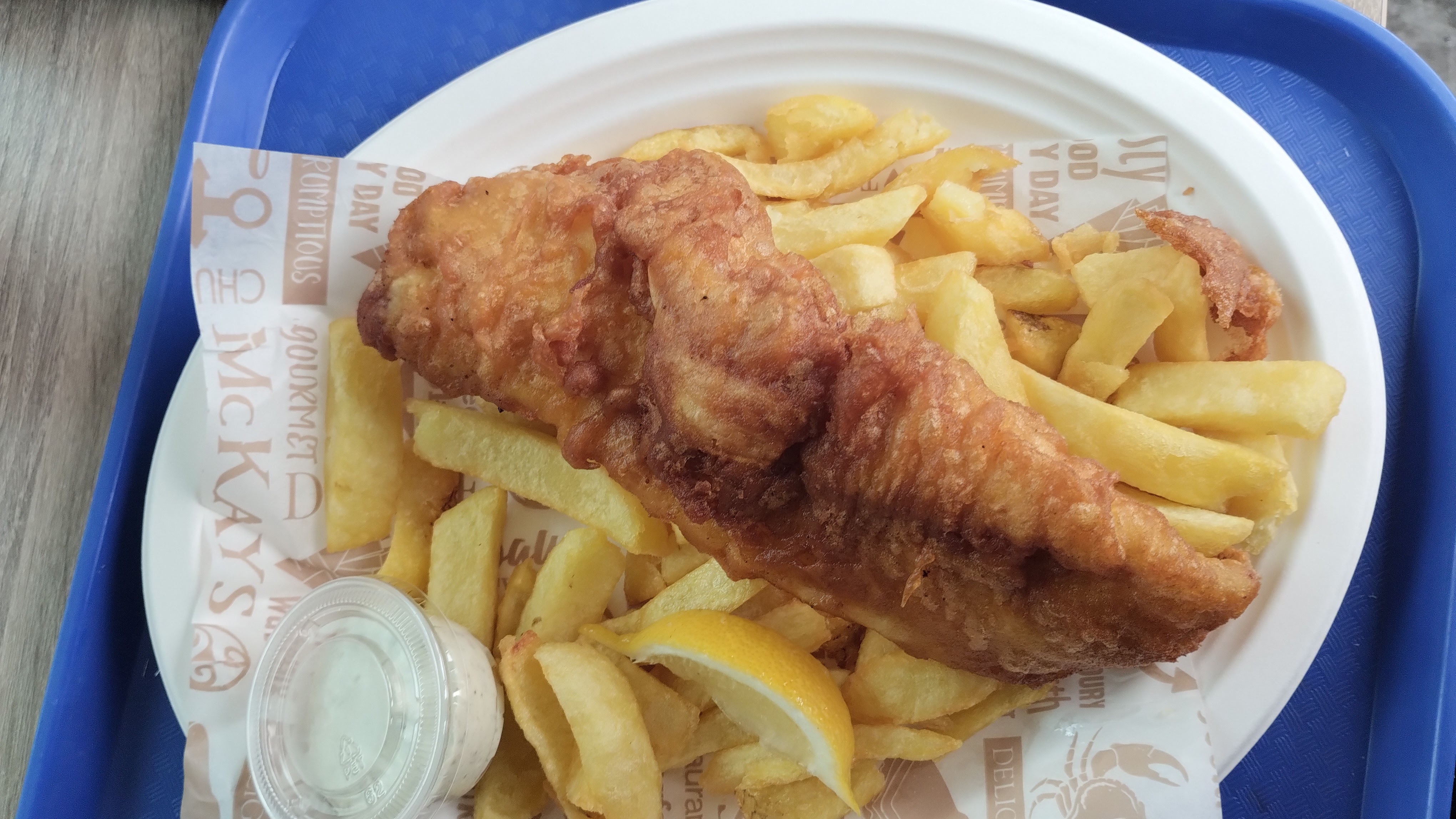
The first thing I did upon arriving was grab some lunch. Since I had never had fish and chips before, I decided to try it, it’s iconic in the United Kingdom. Honestly, I found it highly overrated: crispy, yes, but it tastes like all fried food and is rather bland.
I then explored Pitlochry itself. The town has a very nice church, several distilleries, a huge dam with fish ladders, a theatre, and is generally very beautiful. I also checked out the neighboring forest, which has a short walk that includes a waterfall. Kinda neat, though I personally prefer my German forests, but it’s a short walk I would still recommend.
For my place to stay, I booked a backpacker hotel that cost about 30 pounds a night. I was supposed to share a six-bed room with another guest, but they didn’t show up, so I had the whole room to myself. A funny coincidence: the Wi-Fi password was “I love magic mushrooms.”
For dinner, I wasn’t very hungry, so I had a small plate full of grapes.
Day 9: Hiking Ben Vrackie
The plan for the day was to hike Ben Vrackie. The whole trip up and down took about six hours. Part of the reason it took so long was that I didn’t have a car to drive to the trailhead, so I had to walk to it, which added at least an extra hour. On top of that, I was still sick from the previous days.
That said, the landscape was absolutely beautiful. Finally, I felt like I was seeing something I couldn’t find in Germany. The mountain itself is bathed in a purple hue, and at the foot there’s a lovely little lake. I highly recommend it. Compared to other mountain climbs, it’s not particularly hard. I’ll let the images speak for the rest.
After coming back down, I had lunch and bought some souvenirs for my parent: handmade soap and a wool scarf from Scotland. Then it was time to take the train back to Edinburgh.
Day 10: Flight
Around 10 in the morning, my friend and I took a bus to the airport. It took over an hour and had around fifty stops. Before this trip, I had never been on a bus that stopped every two minutes and had so many stops.
We said our goodbyes, and of course, the flight got delayed. Let me tell you: the airport in Stuttgart is much better than Edinburgh’s. It’s bigger, cleaner, and when walking to the terminal you’re not forced through dozens of shops blasting sales music. The terminal itself isn’t overcrowded, so you don’t have to squeeze shoulder to shoulder with other travelers.
Just like my previous flight, it was relaxing and I finally got to finish the book Introduction to Heidegger. I landed in Stuttgart successfully, and after a few more hours I was home, collapsing exhausted into my bed. Darkness soon overcame me, and I slept deeply.
